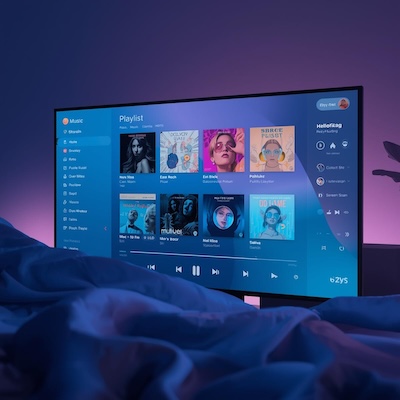Playlists: The Great Lie of Streaming
 Temps de lecture/Reading time : 3 minutes
Temps de lecture/Reading time : 3 minutes
The Mirage of Playlists
Since the rise of streaming, we’ve been told that playlists have become the new radio. Landing on the right Spotify, Deezer, or Apple Music playlist is portrayed as the ultimate holy grail for an independent artist: a springboard to visibility, discovery, and maybe even a career. Platforms use it as a marketing argument: “We help emerging artists get heard.”
But behind these promises of fair discovery lies a much darker reality. Inaccessible editorial playlists, private curators selling placements, fake streams generated by bots—the playlist system looks less like an opportunity for everyone and more like a rigged lottery, if not a shady business altogether.
Editorial Playlists: A Locked Fortress
Spotify and others allow artists to submit their tracks to editorial teams via their interface. In theory, every song has a chance to be heard and selected for an official playlist. In practice, the doors remain shut for the vast majority of independents.
Why?
- Editorial teams receive tens of thousands of submissions every day.
- Slots are extremely limited.
- Priority is given to artists already backed by labels, distributors with established networks, or those making noise elsewhere (media buzz, TikTok virality, etc.).
The myth of “equal chances for everyone” is carefully maintained by the platforms, but the reality is much simpler: without strong professional support, your chances of landing in an editorial playlist are close to zero.
The Parallel Business of Independent Playlists
In response to this lockout, another market has emerged: independent playlists. Private individuals create popular selections (ranging from a few thousand to hundreds of thousands of followers) and accept to place artists’ tracks… for a fee.
Prices vary:
- €20–50 for a small niche playlist,
- several hundred euros for larger ones.
But beware: nothing guarantees that your track will stay there for more than a few weeks. Nothing guarantees that subscribers will actually listen to your song. Often, it’s a waste of money—lots spent for a few hundred streams that don’t translate into real fans.
In some cases, it’s outright fraud. Middlemen prey on artists’ desperation, selling illusory placements. You pay, your track is added… then removed a few days later, or worse: the playlist disappears.
Fraudulent Playlists and Artificial Streaming
Another danger comes from fraudulent playlists, often powered by bots. These “playlist farms” pretend to have subscribers, but the streams behind them aren’t real people.
Consequences:
- Your numbers go up artificially, but nobody actually listens to your music.
- Spotify’s algorithms detect anomalies and may remove your track, or even suspend your account.
- You lose credibility, time, and money.
Some shady platforms or agencies still sell this kind of service under the label of “guaranteed promotion.” In reality, it’s just streaming fraud.
The Real Role of Playlists
So, should we abandon the idea of playlists altogether? Not necessarily. They can play a supporting role in a broader strategy. But let’s be realistic:
- They don’t turn an unknown artist into a star overnight.
- They mostly benefit major labels and already-visible artists.
- Independents might get a small boost in streams, but rarely a genuine community.
In short, a playlist can give you a bit of oxygen, but it will never replace the real groundwork: building a fanbase, creating connections, and diversifying your exposure.
Alternatives and Strategies for Artists
If playlists aren’t the magic solution, where should artists focus their energy? Here are some stronger, more sustainable options:
- Build your community: a loyal fan is worth more than a thousand anonymous streams. Nurture your social media, mailing list, and direct contacts.
- Bandcamp and fair platforms: they let you sell directly to listeners with better compensation.
- Concerts and live shows: nothing replaces the power of a real audience connection.
- Alternative media: web radios, niche blogs, and YouTube channels often provide more meaningful exposure.
- Collaborations: work with other artists, exchange audiences, and create joint projects.
These alternatives take more time and effort than clicking “submit,” but they build a stronger, lasting foundation.
Taking Back Control
Playlists are often presented as an Eldorado, but more often they’re a mirage. Behind the promise of discovery lie closed doors, shady intermediaries, and sometimes outright fraud.
The good news is: artists don’t need to depend on this system. The tools exist to take back control—creating, sharing, meeting, and nurturing your audience directly. Playlists can be a small bonus, but they should never be the center of your music strategy.
Ultimately, true discovery doesn’t happen in a box inside an opaque playlist. It happens in the encounter between an artist and a listener, in a shared emotion. And no automated playlist can ever buy that.